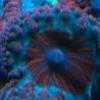-
Topics
-
Latest Update
-
2
Shruthi Narayanan Leaked Video
CLICK HERE ==►► WATCH NOW CLICK HERE ==►► Download Now -
2
-
2
Shruthi Narayanan Leaked Video
Shruthi Narayanan Leaked Video CLICK HERE ==►► WATCH NOW CLICK HERE ==►► Download Now -
-
0
WTS/WTT Lumi neon green japanese kenya
Fresh, natural frag from mother - $8. Tele @twenhao Sent from my iPhone using Tapatalk
-






Recommended Posts
Join the conversation
You can post now and register later. If you have an account, sign in now to post with your account.